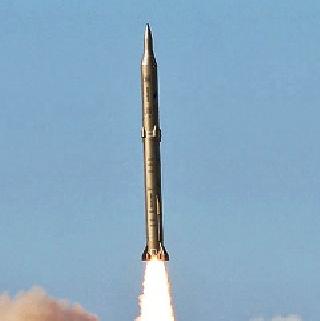
Iran's Sejil missile. A FARS new agency photo
TEHRAN (AFP): Iran paraded 30 missiles with a nominal range of 2,000 kilometres (1,250 miles) on Sunday, the first time it had displayed so many with the theoretical capacity to hit Israeli targets.
Iran displayed 12 Sejil and 18 Ghadr missiles at the annual parade marking the anniversary of the outbreak of the 1980-88 Iran-Iraq war.
The stated range of both missiles would put not only Israel but also US bases in the Gulf within reach.
But in his speech at the parade, President Hassan Rowhani insisted the weaponry on show was for defensive purposes only.
"In the past 200 years, Iran has never attacked another country," he said.
"Today too, the armed forces of the Islamic Republic and its leadership will never launch any aggressive action in the region.
"But they will always resist aggressors determinedly until victory."
The Sejil was first tested in November 2008 and the Ghadr in September of the following year.
Both are two-stage missiles that use solid fuel that allows them to be moved around and launched rapidly.
The naval chief of the elite Revolutionary Guards was meanwhile quoted as saying that Iran has the capability to strike US warships in the Gulf.
"We have the necessary equipment to destroy American aircraft carries and warplanes in the Gulf," the ISNA news agency quoted Admiral Ali Fadavi as saying.
Bahrain, a strategic archipelago just across the Gulf from Iran, is the home base of the US Fifth Fleet.
The elite Revolutionary Guards is in charge of protecting the strategic Strait of Hormuz, at the entrance to the Gulf, a key gateway for the world's oil supplies.
Over the past year, the United States has gradually strengthened its naval forces in the Gulf region, particularly after Iran at one point threatened to block the strait.
 Previous Article
Previous Article Next Article
Next Article













The Indian Air Force, in its flight trials evaluation report submitted before the Defence Ministry l..
view articleAn insight into the Medium Multi-Role Combat Aircraft competition...
view articleSky enthusiasts can now spot the International Space Station (ISS) commanded by Indian-American astr..
view article